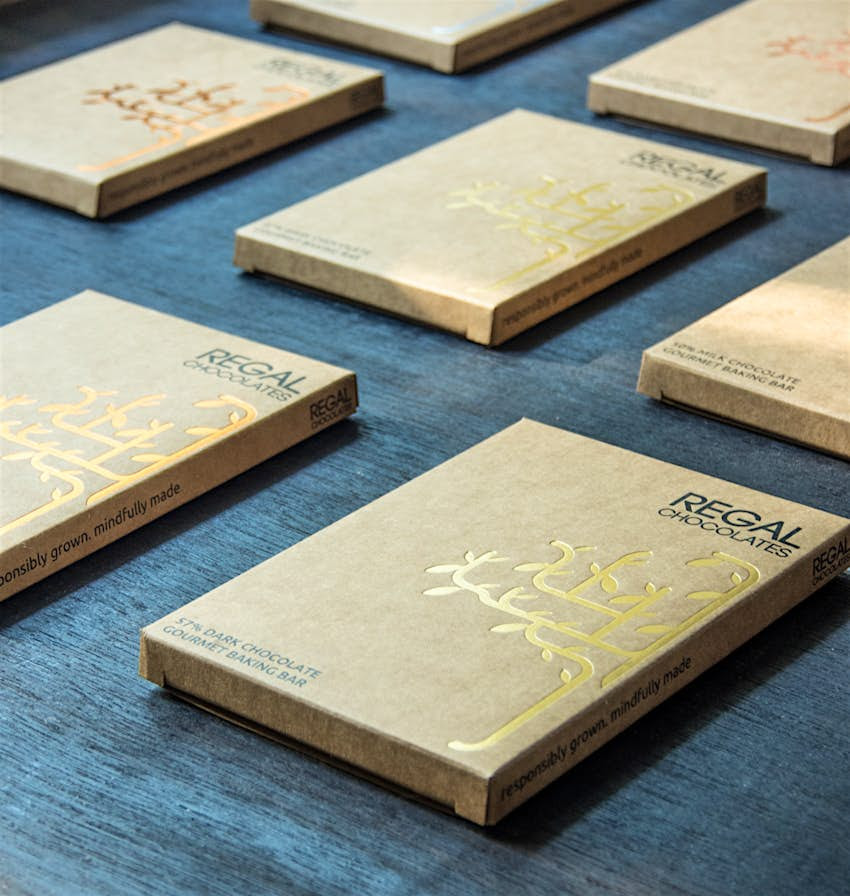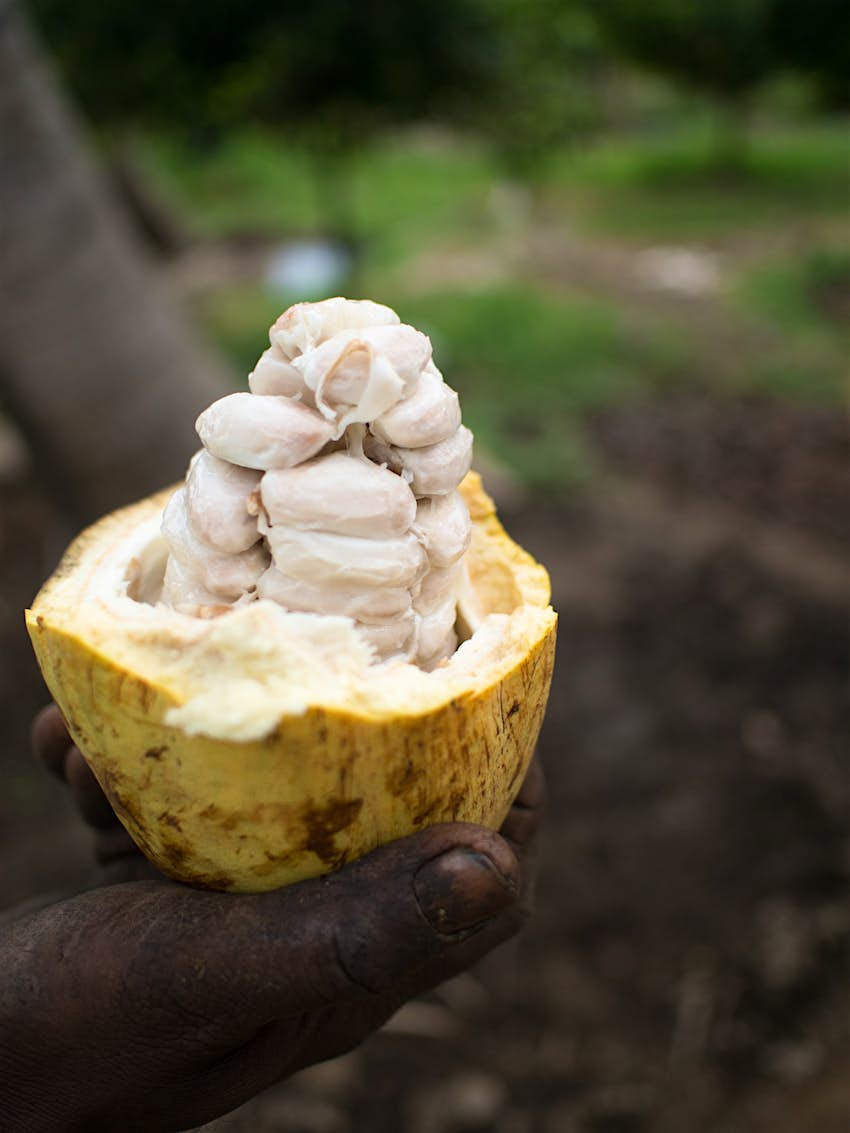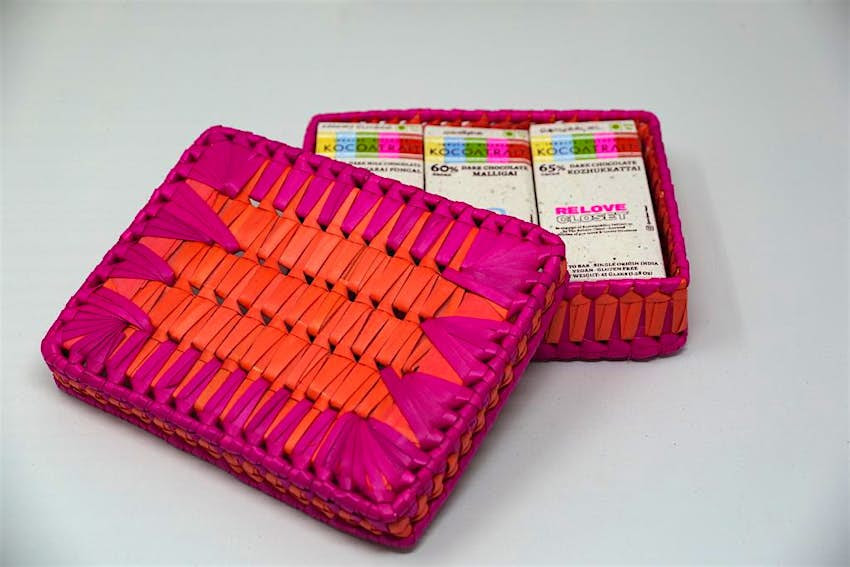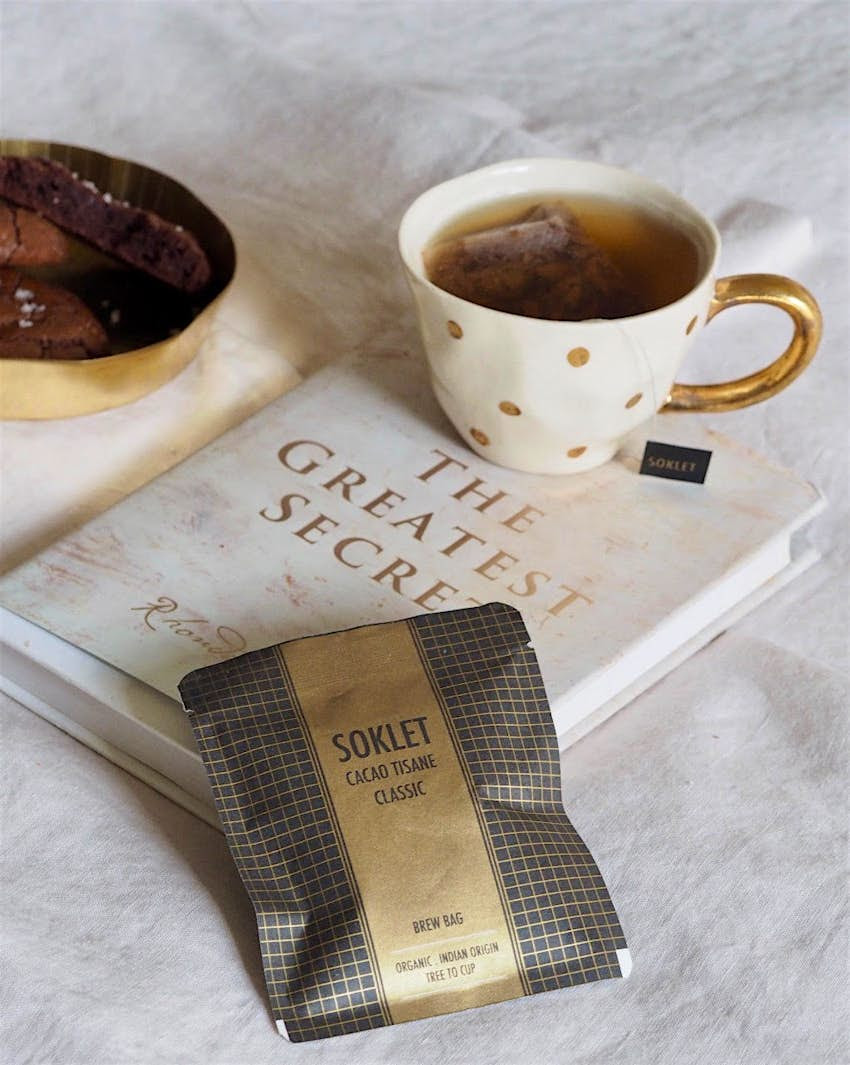Until a few years ago. if you wanted to buy chocolate in India, all you would have found was mass produced, sugar laden, multinational brands. Apart from a few local names like Campco and Amul, there was no Indian chocolate in the market. Chocolate, in fact, was hardly considered an Indian product. Today, however if you step out to buy chocolate, you’d find at least half a dozen Indian brands, none of them mass produced and almost all using 100% local Indian cocoa.

Artisanal chocolate market has seen tremendous traction in India in the past few years ©Kocoatrait/Cocoatrait
Making of the Indian chocolate movement
“India’s chocolate movement has been in the making for a few years now,” says Rushina Munshaw Ghildiyal, author, culinary consultant and chronicler, who has seen a steady rise in the popularity and growth of Indian chocolate. “While on the commercial chocolate front there has been a growing demand for premium chocolates, artisanal chocolate market has seen tremendous traction with India growing its own cacao and many artisanal bean-to-bar chocolate makers launching their own labels.” This, adds Rushina, has also been seen as a growing trend over the years in the annual Godrej Food Trends Report that brings voices of hundreds of tastemakers from the F&B industry to predict the top food trends every year.While the homegrown chocolate may have been in the making for almost decade now, it got a push about 6-7 years ago when more and more young entrepreneurs took interest and invested in Indian chocolate. Among the first ones to do so were Karthikeyan Palanisamy and his brother-in-law, Harish Manoj Kumar of Soklet.

Indian grown cocoa has been getting great reviews in the international markets ©Soklet / Regal Chocolates
Indian cacao at the helm
While Karthikeyan and Harish Manoj Kumar had been growing cacao in their family farm, Regal Plantation since 2005, it was in 2016 when they decided to also make chocolate. “Our farm had been growing cacao since 2005, so in essence we just did a forward integration, trying to add more value to the farm output,” says Karthikeyan. Focused on making the best cacao since the beginning the duo had worked with bean-to-bar chocolate makers around the world and that had taught them a bit about fine chocolates.The knowledge came in handy while rolling out there own product, Soklet, in 2017 where the quality of the cacao remained paramount. “In the artisanal method of chocolate production, it is the quality and flavor of the beans that matter,” informs Karthikeyan, “unlike a commercial chocolate operation that intentionally destroys flavor to tone down and homogenize it to achieve consistency, a good chocolate maker works in enhancing the flavors present in the bean,” and so even his focus is to enhance the natural flavor of their cocoa rather than masking it. Cocoa or cacao remains one of the key differentiating factors of the new-age, artisanal chocolate. Whether or not they grow cocoa, most chocolate makers today are sourcing local cocoa or cacao grown in the foothills of South India.

Regal Chocolates are made with 100% Indian cacao ©Soklet / Regal Chocolates
If Karthikeyan’s Regal Plantations provide raw material for his retail brand, Soklet, Nitin Chordia’s Kocoatrait relies on small farmers across South India for his raw material. “We source our cocoa from multiple states in South India,” he tells us. “We work with farmers to improve their post harvesting and are involved in every stage of the processing.” So, while the cocoa is grown by a third party, Kocoatrait is involved in it from harvesting of the cocoa beans to the packaging of the final bar. “We help in fermentation and drying, and we grade, roast, grind the cocoa before tempering and moulding it to make the final bar,” adds Chordia.
As India’s first certified chocolate taster, Nitin had seen a gap between demand and supply of premium chocolates in India and was certain that India was ready for its own chocolate, which led to the launch of his label. Before launching his own brand in 2019 however, he had already mentored and trained 150 chocolate makers at his chocolate making programs in Chennai. Incidentally, Nitin was also the first one to taste Karthikeyan’s Soklet and give him inputs for the final product.

India’s only tree to bar chocolate, Soklet, grows their own cacao in Tamilnadu ©Soklet / Regal Chocolates
Sustainability at its heart
Started as an initiative to bring the finest chocolates to Indian consumer and represent Indian chocolate across the globe, Chordia’s Kocoatrait, co-owned by his wife Poonam Chordia, is also world’s first, and possibly only, zero waste and sustainable chocolate. “Our inspiration for zero waste started from the cocoa farm itself which, by design is a zero waste environment and we wanted to extend this to the final product. We worked to ensure everything on our chocolate was sustainable.” Made with natural flavours, wrapped in superior grade foil and packed in cocoa husk paper the chocolate has been getting a great response in both national and international markets.
At Soklet meanwhile sustainability starts at the farm itself. While they had adopted sustainable practices since beginning, the farm is now also certified as organic, making Soklet a 100% sustainable tree-to bar chocolate. “The guiding principles used in our farm come from Permaculture and Korean Natural Farming practices,” informs Karthikeyan. Our livestock (Desi Cows) who provide inputs for the basic panchakavya and there is no pesticide or herbicide used,” he continues. The husks of the pod and the shell are also composted and returned back to the soil at the farm.

The Madras Collection by Kocoatrait is an ode to their home city ©Kocoatrait/Cocoatrait
Indigenous and natural flavors and variants
Sustainability goes much beyond haptics in chocolates today and extends also to its flavors and ingredients. Most Indian artisanal chocolates use natural flavors. While it may have caused a stir some years ago, it is no longer unusual to see flavors like bhut jolakia chilli, candied ginger, hibiscus, saffron, even rabdi and jasmine in chocolates. The recently launched Spice Collection by Kocoatrait and Rushina Munshaw Ghildiyal is a fine example of this.

The Spice Collection by Kocoatrait is a unique set comprising of spice flavored chocolates. ©Kocoatrait/Cocoatrait
“While working on my Instagram project, SpiceChroniclesWithRMG, it struck me that the use of spices in chocolate and rarely goes beyond chilli, pepper or ginger,” says Rushina who along with Poonam Chordia, the co-founder and chocolate maker at Kocoatrait, worked on the special collection to test new flavors. The chocolates in the Spice Collection vary in strength and have been made with spices like star anise, Guntur chilli, fenugreek, green chilli, curry leaf and more such. While they may sound strange, even irrational, most of them work really well on the palate. Before this, Kocoatrait had worked on a similar collection that paid homage to the flavors of their home city, Madras, with flavors such as Malligai or jasmine, Sarkarai Pongal or sweet pongal, Panai Sarkarai or palm jaggery, and Panakam, a local jaggery based drink, while their regular flavors comprise of flavors like rose, lavender, masala tea, filter coffee among others.

At Soklet the flavors, ingredients, even package design are inspired by all things Indian ©Soklet/Regal Chocolates
“We have always wanted to be as Indian inspired as possible, says Karthikeyan, “and what can be more Indian than Filter Kaapi?” The most popular flavour at Soklet came about in trying to develop a flavoured dark milk chocolate. The combination of chicory, pure arabica coffee and dark milk chocolate turned out to be an award winner. The Desi Rabdi flavour, similarly, was inspired by the Indian rabri and a special version of white chocolate was developed just for this. The classic combination of pistachios and saffron takes the chocolate very close to the real rabri.

There is a lot more to Indian chocolate than the bars and Soklet’s Classic Cacoa Tisane is one of may such products ©Soklet/Regal Chocolates
Looking ahead at a bright future
While there is a lot of action in the industry presently, what do these chocolatiers think about the future of the Indian chocolate? “The next few years are going to be very exciting in the chocolate space, quips Nitin, “never have we seen so much competition and choice in bean-o-bar chocolate,” he adds. Karthikeyan meanwhile feels that the trend will lead to some clear winners. “We believe there will be a few strong regional players with their own identities in the near future, but it will be some time before we have significant national players in the space.” “The Indian bean-to-bar chocolate makers are being recognized for their work across the world and the future looks fantastic for Indian chocolate. As someone who has worked with flavors I also see immense potential in unusual Indian inspired flavors,” closes Rushina. Maybe that is why she is already working on a line of new Indian flavors with Poonam and Nitin. We can only say we are eagerly looking forward to them.

